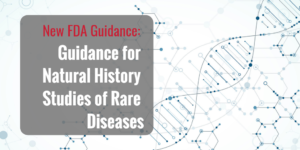(2 of 4) Transitioning from Clinical Research to FDA Review: Clinical Data Application Assembly Team
 Are you planning, or currently in, the process of building your submission clinical data package for a New Drug Application (NDA) or Biologics License Application (BLA)? It can be a complicated process, and in this blog series, we are discussing some of the most important considerations to keep in mind while preparing for FDA submission of clinical data and analytics. Our last post covered the process of preparing the application deliverables to showcase all of the safety and efficacy evidence on your new biologic or pharmaceutical. This time, we are looking specifically at the team members you will need to assemble to ensure the process is smooth and flawless.
Are you planning, or currently in, the process of building your submission clinical data package for a New Drug Application (NDA) or Biologics License Application (BLA)? It can be a complicated process, and in this blog series, we are discussing some of the most important considerations to keep in mind while preparing for FDA submission of clinical data and analytics. Our last post covered the process of preparing the application deliverables to showcase all of the safety and efficacy evidence on your new biologic or pharmaceutical. This time, we are looking specifically at the team members you will need to assemble to ensure the process is smooth and flawless.
 The process of developing new pharmaceuticals and biologics is long-drawn, pricey, and heavily regulated. After drug discovery and years of pre-clinical and clinical research, a regulatory authority, such as the U.S. Food and Drug Administration (FDA), must review all animal and human data regarding a product’s safety, efficacy, and biological mechanisms. Successfully achieving market approval requires not only a safe and effectual therapy but also accurately presenting all of the evidence to prove it works and is safe for use. In this blog series, we will be reviewing some of the most important components necessary for filing a New Drug Application (NDA) or a Biologics License Application (BLA): the deliverables, the people, the timeline, and the budget. Today, let’s start with the deliverables.
The process of developing new pharmaceuticals and biologics is long-drawn, pricey, and heavily regulated. After drug discovery and years of pre-clinical and clinical research, a regulatory authority, such as the U.S. Food and Drug Administration (FDA), must review all animal and human data regarding a product’s safety, efficacy, and biological mechanisms. Successfully achieving market approval requires not only a safe and effectual therapy but also accurately presenting all of the evidence to prove it works and is safe for use. In this blog series, we will be reviewing some of the most important components necessary for filing a New Drug Application (NDA) or a Biologics License Application (BLA): the deliverables, the people, the timeline, and the budget. Today, let’s start with the deliverables.


 Placebos are a staple of double-blind, randomized control studies. This is because they help to reduce study bias. When treating malignant hematologic and oncologic disease, however, there are
Placebos are a staple of double-blind, randomized control studies. This is because they help to reduce study bias. When treating malignant hematologic and oncologic disease, however, there are 


